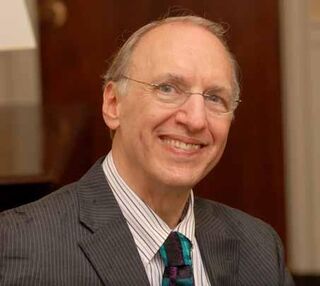Psychoanalysis
A Life Devoted to Teaching
Psychoanalytic social worker William Meyer discusses his life's passion.
Posted June 13, 2021 Reviewed by Jessica Schrader

William S. Meyer, LCSW, is Director of Training for Social Work and an Associate Professor in the Departments of Psychiatry and Obstetrics and Gynecology at Duke University Medical Center. A dedicated teacher, he has taught and supervised social work interns and third-year psychiatry residents at Duke for over 30 years. He is a past president of the American Association for Psychoanalysis in Clinical Social Work and namesake and first recipient of the William S. Meyer Teaching Award of the Psychoanalytic Center of the Carolinas.
Mark Ruffalo: Thank you so much, Bill, for agreeing to this interview. I first met you almost 10 years back when I was trying to find my footing as a new MSW graduate interested in psychotherapy. You've been a great help to me, as I know you've been to many others. When you reflect on your career practicing and teaching for more than four decades, what stands out most in terms of the changing landscape of the clinical social work and psychotherapy professions? It seems, to me, that your 1993 paper "In Defense of Long-Term Treatment," published in the journal Social Work, is even more relevant today than it was then.
William Meyer: Thanks, Mark. What has been so rewarding for me as a teacher is knowing that I might have played some role in encouraging younger practitioners like you to continue in the practice, writing, and teaching of depth psychotherapy. The changes that have occurred since my article came out have been worse than I could have imagined. Corporate interests, from huge insurance companies to big pharma, to artificial intelligence, have virtually taken over the way we train contemporary mental health practitioners.
What makes me profoundly sad is that many of us were trained that the patient was our teacher and we were the students. Thus, if we could take the time to learn about the patients' struggles—which were often multi-layered, deep, and historical—then we might have something useful to offer them. These days, we're supposed to be the 'experts,' and after making the briefest and most superficial assessment of the patient's problems, we're taught to propose interventions, often based on impersonal manuals, on how to provide a quick fix. Something vital and essential is on its way to extinction in the way psychotherapy is taught and practiced these days.
MR: Your remarks here remind me of something Otto Kernberg was quoted as saying recently, that "psychotherapy training is going down the drain in this country." Yet, in my teaching of psychiatry residents, I have found a renewed enthusiasm in psychoanalytic methods and concepts. Do you have the sense, as I do, that the pendulum may be swinging back toward a more pluralistic approach to mental disorder? Or, to put it another way, do you think that depth psychotherapy has a future?
WM: I think depth psychology, like classical music, will always be around, although those that appreciate what it has to offer, will almost certainly be small in number. My concern about pluralism is that trainees will neither appreciate the substance of a psychoanalytic viewpoint nor the years that it takes to become a seasoned psychoanalytic clinician. A true psychoanalytic education involves years of study involving reading, going to lectures, having years of supervision and years of one's own treatment. Today's trainees, taught in a pluralistic environment, wrongly believe that therapies that focus on behaviors and cognitions are psychoanalytic therapy equivalences, just different.
MR: I recall you giving me the advice very early on to gain experience in two types of settings: one in which you see a large volume of patients for a short period of time, and one in which you see a small number of patients over a long period of time. I've been very fortunate to have had the opportunity to do that in my own career. I think that simple advice was so crucial to my development as a psychotherapist. Now that I'm the "teacher" to some (though I think we should all think of ourselves as perpetual students of this beautiful art), I'm frequently asked for recommendations for good introductory texts on psychoanalytic theory and psychotherapy. I usually recommend Nancy McWilliams' Psychoanalytic Diagnosis and Psychoanalytic Psychotherapy: A Practitioner's Guide, alongside Jonathan Shedler's excellent article, "That Was Then, This Is Now." Do you have any alternative or additional suggestions?
WM: I'm flattered that you would recall something I not only said Mark, but still so strongly believe in. Like you, I think McWilliams' books are excellent and unrivaled for their clarity and thoughtfulness. I've sometimes referred to myself as a "meat and potatoes guy" when it comes to the theories and writings of psychoanalytic icons. Those that are more esoteric seldom speak to me with the same immediacy. When I was new to the field, I kept rereading Semrad: The Heart of a Therapist, which is a book of his quotes about humanity and therapy collected by the psychiatry residents he trained. ("Sadness is the vitamin of growth" is but one example.)
At one point I was heavily influenced by the ideas of concentration camp survivor, Bruno Bettelheim, a man once revered, but whose severe character flaws left his reputation in near tatters. Yet, his book, co-authored with Alvin Rosenfeld, The Art of the Obvious, demonstrates his unique clinical acumen. When I read The Clinical Diary of Sandor Ferenczi, it blew my mind as I discovered that his ideas and practices foreshadowed what took us nearly a century to rediscover.
My hope is that today's clinician would take the time to read at least one paper by all the major authors from years past and then read what others write about them (except for Winnicott—people should read as much Winnicott in the original as they can!) Start with Freud's "On Beginning the Treatment" and then work your way forward, I would say. As you're reading contemporary writers (Salman Akhtar is not to be missed) make sure you look in on Fraiberg, Mahler, the Blancks, Greenson, Loewald, Kernberg, Kohut, Searles, and the list goes on.
Study groups can be so helpful in plowing through the field. I, for instance, have been meeting with the same five people for over 30 years.
MR: This is really some wonderful advice, Bill, that I'm sure graduate students and early-career therapists interested in psychoanalysis and psychoanalytic psychotherapy will find helpful. I agree wholeheartedly with your suggestions and would also add Fromm-Reichmann, Sullivan, and Arieti to that list of "essentials," especially for those interested in the psychotherapy of severe mental illness.
To wrap up, I'd like to ask a couple questions that will require you to reflect back on your long and accomplished career. First, what is one thing you believed to be true about psychotherapy when you began your career that you no longer believe to be true? And secondly, what piece of advice would have you given yourself as a beginning therapist knowing what you do now, more than 40 years later?
WM: Well, that's the problem with making a list of the field's top most influential writers and thinkers, Mark. Once you compile such a list you realize there's another 10 or 20 that should be there as well, which leads to another 10 or 20, and so it goes.
Since the practice of psychotherapy is predicated on what we know (or think we know) about normalcy and psychopathology, from my early years as a young therapist, I have been forced to continually examine and try to think through and refine how my own biases, and those of our culture, have limited me. Psychoanalysis and psychiatry, for instance, had for so long denied the prevalence of child sexual abuse. Mental health professionals were viewing "normal" from a largely white, heteronormative, European, male, able-bodied lens. Every year, I feel like my eyes are opening—even just a bit—wider.
The advice I would offer the beginning therapist—all therapists for that matter—is get comfortable being the student and always let the patient be the teacher. If you let the patient teach you who they are, and why they are, this is the most promising path toward healing within the confines of an intimate therapeutic relationship.
MR: Thank you so much for taking the time to participate in this interview and share your wisdom with a broader audience. I am certain that your work will continue to inspire therapists in the years to come, just as it continues to inspire me.
WM: I thank you so much, Mark. I have really enjoyed this conversation.
See References below for some selected papers authored or co-authored by Bill Meyer.
References
Meyer, W. S. (2019). Long-term treatment in the rearview mirror: 'Evidence' from my 40-year clinical career. In S. Lord (Ed.), Reflections on long term relational psychotherapy and psychoanalysis: Relational analysis interminable (pp.50-58). Routledge.
Meyer, W. S. (2013). The psychoanalyst and the 'homosexual': A long, dark journey into light. Smith College Studies in Social Work, 83(1), 18-25.
Meyer, W. S. (2012). Holding a mother/holding a baby: Psycho-social casework in a clinic for women with high-risk pregnancies. In J. Berzoff (Ed.), Falling through the cracks: Psychodynamic practice with vulnerable and oppressed populations (pp. 180-205). Columbia University Press.
Meyer, W. S. (2010). Bruno Bettelheim and his window to the soul. Clinical Social Work Journal, 38(3), 275-286.
Meyer, W. S. (2007, June). The moral imperative of universal health care. Clinical Social Work Journal, 135-140.
Meyer, W. S. (2005). The mother returns to psychoanalysis: Sandor Ferenczi, welcome home. Smith College Studies in Social Work, 75(3), 15-31.
Meyer, W. S. (2001). Why they don’t come back: A clinical perspective on the "no-show" client. Clinical Social Work Journal, 29(4), 235-339.
Meyer, W .S. (2000). Caring for society's "have nots". Psychoanalytic Social Work, 7(4), 95-103.
Meyer, W. S. (2000). The psychoanalytic social worker/ the social work psychoanalyst: What shall be our message? Clinical Social Work Journal, 28(4), 355-367.
Meyer, W. S. (1998). Therapy of the conscience: Technical considerations for working with the severe super-ego of the patient. Clinical Social Work Journal, 26(4), 353-368.
Palmer, A., & Meyer, W. S. (1995). Gratification vs. frustration: The legacy of the schism between Ferenczi and Freud. Clinical Social Work Journal, 23(3), 249-269.
Meyer, W. S. (1993). In defense of long-term treatment: On the vanishing holding environment. Social Work, 38(5), 571-578.
Meyer, W. S. (1991). A case of restricted entitlement. Clinical Social Work Journal, 19(3), 223-235.
Meyer, W. S. (1988). On the mishandling of anger in psychotherapy. Clinical Social Work Journal, 16(4), 406-417.
Meyer, W. S. (1987). An abused child grows up and enters treatment. Clinical Social Work Journal, 15(2), 136-147.




